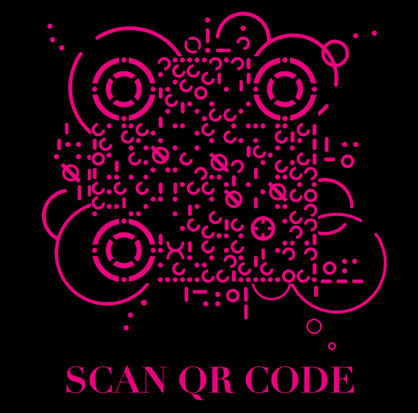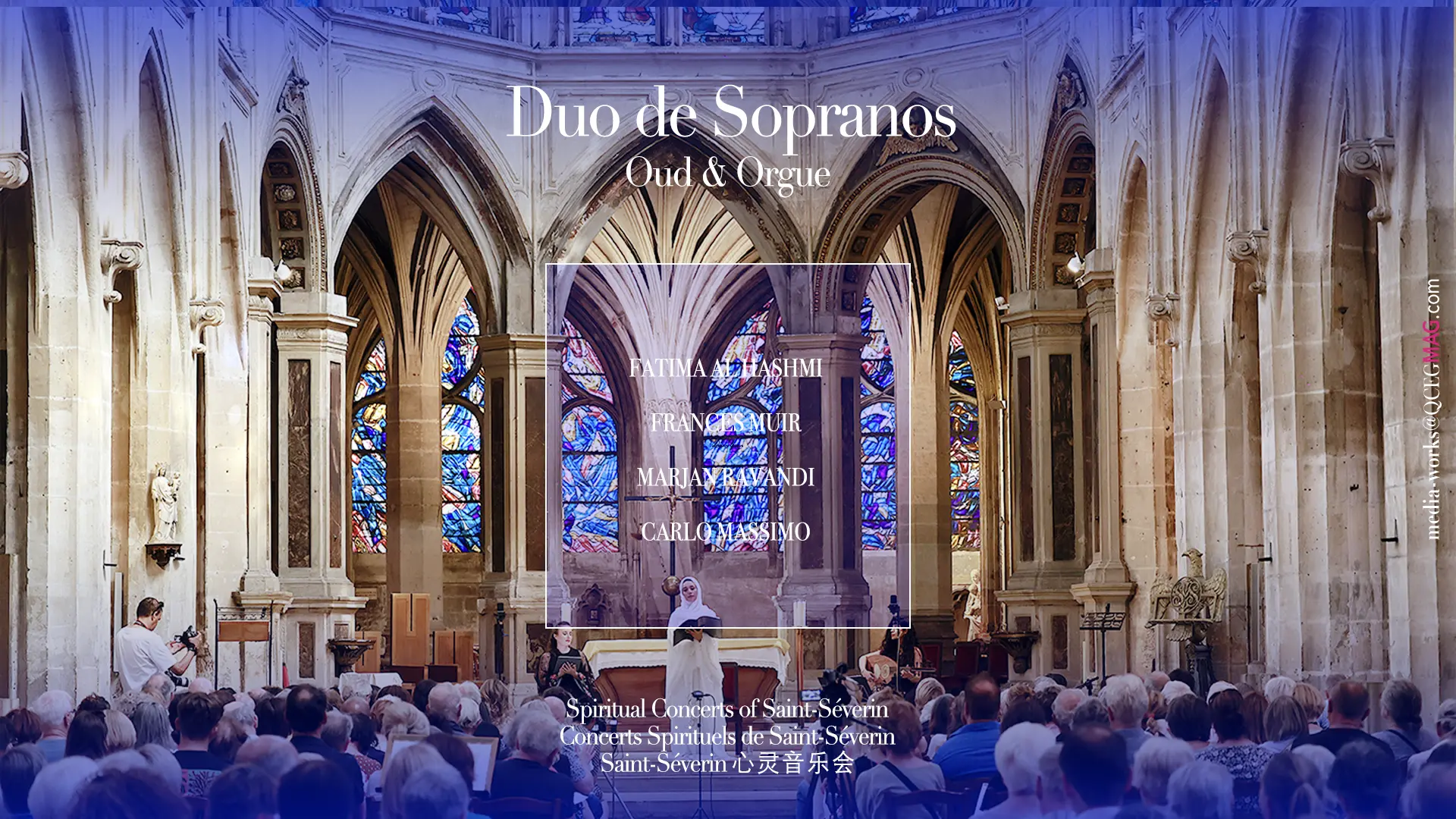

Editor-In-Chief
MeeKar Lim
International Fashion Editor
Suna Moya
Editor-At-Large
Zhang XiaoXiao

Please contact:
media-works@qcegmag.com
or
WeChat:QCEGMAG_Contact
QCEG MAG is a publication covering a selection of news in fashion, beauty, accessories, celebrities, LIVING ARTS, sports TRAVELS and relating videos around the world. Our portal is currently available in English and Chinese Languages for our international readers & viewers.
Get to know our professional team and their passionate creativity at QCEGPro.com

— QCEG MAG Editorial Update —
NOTICE: Following the publication of this article on 20 August 2025, the Emirates National Choir Association (ENCA) has officially been renamed the Emirates Choir Association (ECA). Thus, we have updated the article’s contents today (1 November 2025).


THE ECA ENSEMBLE IN HARMONY AT SAINT-SÉVERIN
ECA’s Saint-Séverin Performance united voices across cultures,
transforming music into a living language
of hope, harmony, and humanity.

Within the historic Saint-Séverin Church in Paris, music transcended mere sound and became a living force. For the 350 spectators present, the evening of 9 August was not simply a concert, but a profound testament to unity, courage, and the enduring power of human connection.
At the helm stood Ferrouze Gadery, Executive Director of the Emirates Choir Association (ECA). Her mission was clear: to transform diversity into strength, to allow every voice its own brilliance, and to employ music as a bridge across cultures, faiths, and generations. Founded by thirteen visionaries — including neurodivergent talents and cultural leaders — ECA stands today as a beacon of inclusion, dialogue, and cross-cultural understanding.
This performance was far more than artistry; it was a statement of hope, a call to confront injustice, and a reminder that music speaks the universal language of empathy.
Four extraordinary artists brought this vision to life:
From Frances’s crystalline interpretations to Marjan’s transcendent oud arrangements of sacred works, and Carlo’s seamless union of singing while playing the organ, each performance flowed effortlessly into the next, shaping a concert that spoke of courage, grace, and artistry in its purest form.
At the heart of this radiant ensemble was David Alain Nihi, internationally recognised as ALAN-NIHIL. A distinguished cultural diplomat, he received the 2024 Médaille d’Or from the Académie Honorifique Française: Arts, Sciences et Lettres, and has been honored for four consecutive years as Composer of Honour by the Société Nationale des Beaux-Arts at the Louvre. His signature fusion of Western classical refinement with Middle Eastern and global influences unified the evening into a seamless work of harmony. The evening was made all the more special by the presence of Dr. Laila Almheiri, Chairwoman of ECA.
The concert also carried the distinction of the attendance of Dr. Laila Almheiri, Chairwoman of ECA, who came especially for this occasion. From Frances’s crystalline interpretations, to Marjan’s transcendent oud arrangements of sacred works, and Carlo’s daring feat of singing whilst playing the organ, every moment became a testament to courage, grace, and artistry.
When asked about her vision for the programme, Ferrouze Gadery spoke with conviction:
“This is ECA’s mission brought to life — to transform diversity into strength and fuse individual voices into one collective force.”
Her careful curation of artists from classical, world, and sacred traditions demonstrated that beauty lies not in uniformity but in the blending of differences. Each performer contributed not only their skill but their spirit. This was not a display of ego — it was a soul-to-soul exchange, rooted in sincerity, truth, and love. That invisible bond became the true magic of the night.
The programme unfolded like a journey of the heart, flowing through sacred arias and world classics — from Schubert’s Ave Maria and Bach’s Erbarme Dich, to Rossini’s Agnus Dei and Fauré’s Panis Angelicus. The evening reached its pinnacle when Fatima and Frances, dressed in gowns by Palestinian designer Hindy Mahdi, began from opposite ends of the church. Their voices met mid-aisle, carrying Panis Angelicus into the candlelit vaults. When they clasped hands at the altar, the music ceased to be sound alone — it became a living symbol of peace. Tears shimmered across the audience, each one a reflection of shared humanity.
For Marjan Ravandi, the night affirmed that music transcends boundaries. Her oud became a vessel, sailing effortlessly between East and West, carrying melodies older than memory yet alive in the present. Together, the four artists illustrated that in music’s embrace, differences dissolve.
Saint-Séverin — a monument to centuries of faith — became the perfect stage for Ferrouze Gadery’s message: that love and humanity can transcend religion, nationality, and culture. In a divided world, she chose the most powerful instrument of all — music — to convey hope, faith, and compassion.
Founded on the belief that music unites where words divide, ECA’s performance was more than a concert — it was a declaration of resilience, openness, and cultural dialogue. As the audience stepped into the Parisian night, one sentiment was unanimous: never before had this church felt such emotion. The voices lingered long after the final note, carrying Ferrouze Gadery’s message far beyond Saint-Séverin — a call for unity destined to resonate for years to come. For the 350 spectators present, the evening was not simply a concert but a profound testament to courage, connection, and the enduring power of music.


— SUNA MOYA
Video Clips Editing By QCEG
A SYMPHONY OF PEACE:
ECA’s Saint-Séverin Performance united voices across cultures, transforming music into a living language of hope, harmony, and humanity.

Suna Moya: The concert at Saint-Séverin was incredibly moving. How did the idea for this programme come about?
Ferrouze Gadery:From the very beginning, I wanted to show that music is more than art — it is a bridge. ECA’s mission has always been to unite diverse voices, and this programme was carefully designed to demonstrate that beauty lies not in sameness, but in difference. Every artist brought their heritage, their unique sound, and their soul. Together, it became something far greater than any individual contribution.
SUNA MOYA: You brought together artists from very different traditions — classical, world, and sacred music. What message were you hoping to convey through this blend?
Ferrouze Gadery:The message is simple: unity through diversity. In a world that too often divides, we chose music to show that understanding and collaboration are possible. Each voice, each instrument, each note represents a culture, a story — and when they come together, they create harmony. That harmony is hope.
SUNA MOYA: Many of the performers volunteered their talent for this concert. How important was that gesture for you?
Ferrouze Gadery: This was not a performance of ego, but of spirit. Their generosity of heart brought the music to life — sincere, vulnerable, and profoundly human. That is the magic that happens when people give freely. It reminds us that true art comes from connection, not recognition.
SUNA MOYA: What do you hope the audience took away from this evening?
Ferrouze Gadery: I hope they felt that humanity can transcend borders, religions, and cultures — that even in challenging times, we can find unity through shared experiences: through beauty, through empathy, through music. If even one person left with a renewed sense of hope, the evening achieved its purpose.
SUNA MOYA: Looking ahead, how do you envision ECA continuing this work?
Ferrouze Gadery: ECA will continue to foster collaboration across cultures and disciplines, provide platforms for both emerging and established artists, and champion inclusivity in the arts. We want to prove that music has the power to transform lives, build bridges, and inspire peace — again and again.
As our conversation with Ferrouze Gadery came to a close, her words echoed the spirit of the evening itself: music as a living testament to unity, empathy, and hope. Through her vision, ECA continues to shape a future where art does not only entertain but heals, inspires, and brings humanity closer together.
